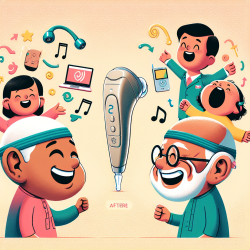Key Findings from Ten Years of Bone Conduction Hearing Aids
The research article "Ten years’ experience with bone conduction hearing aids in the Western Cape, South Africa" provides a wealth of data-driven insights. Between 2016 and 2021, 29 children received implanted bone conduction hearing devices, and 104 children were fitted with bone conduction devices on softbands. The study found that bone-anchored hearing devices, whether fitted on softbands or implanted abutments, can provide viable solutions in settings where patients have limited access to hearing healthcare.Strategies for Practitioners
Practitioners can adopt several strategies from the RCWMCH experience to improve their services:- Immediate Fitting: Fitting bone conduction devices on softbands immediately after diagnosis can provide immediate access to sound, essential for speech and language development.
- Remote Follow-Up: Using remote technology for follow-up care can make hearing healthcare more accessible to vulnerable populations. For example, WhatsApp pictures of abutment complications can be sent to ENT surgeons for timely intervention.
- Functional Hearing Outcomes: Measure functional hearing outcomes using validated questionnaires like PEACH and TEACH to gather feedback from parents and teachers, thereby providing a comprehensive understanding of the child’s auditory performance.
- Funding and Accessibility: Securing funding for bone conduction hearing devices ensures that no end-user point of payment is necessary, making the program more inclusive.
Implications for Policy and Planning
The success of the RCWMCH program highlights the need for similar strategies in other resource-constrained settings. Recommendations include:- Reviewing guidelines for medical and audiological treatment of conductive, mixed, or single-sided hearing loss in children.
- Implementing immediate fitting of bone conduction devices on softbands to provide early auditory access.
- Utilizing remote technology for follow-up care to reduce the burden on centralized healthcare facilities.
- Ensuring political and financial support for the provision of hearing healthcare devices.
Conclusion
The RCWMCH experience underscores the importance of accessible, patient-centered hearing healthcare. By adopting these strategies, practitioners can significantly improve outcomes for children with hearing loss.To read the original research paper, please follow this link: Ten years’ experience with bone conduction hearing aids in the Western Cape, South Africa.










